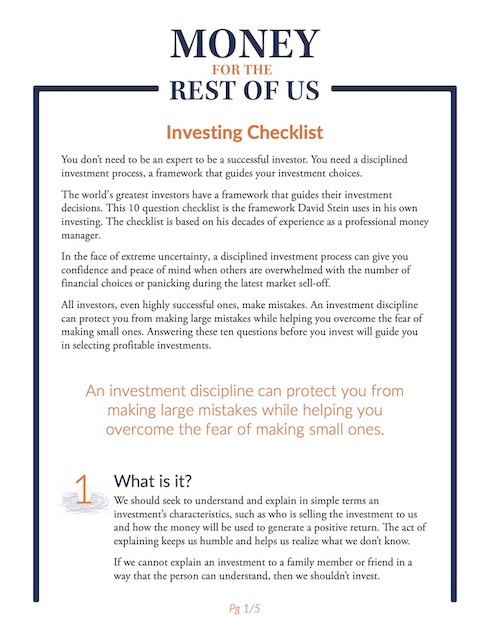Discover how bond market ETFs have transformed investing — making bonds easier, cheaper, and more accessible than ever. We also explore how the bond market’s very composition has evolved.

Show Notes
The total return strategy in bonds is far from dead by James Bianco—The Financial Times
What I Learned in My First Year Managing Fixed-Income by Jim Bianco—Bianco Research Advisors
ETFs are eating the bond market by Robin Wigglesworth and Will Schmitt—The Financial Times
Episode Sponsors
Delete Me – Use code David20 to get 20% off
Related Episodes
463: How to Lock in Higher Yields in Case Interest Rates Fall
455: Easier Investing, Richer Life: TIPS Ladders to Annuities
418: Bond Investing Masterclass
Transcript
Welcome to Money for the Rest of Us. This is a personal finance show on money, how it works, how to invest it, and how to live without worrying about it. I’m your host, David Stein. Today is episode 523. It’s titled: “Why It’s Easier Than Ever to Invest in the Bond Market.”
Where I Started with Bonds
When I became an institutional investment advisor in the mid-90s—working mostly with
university endowments and private foundations—typically when we got a new client, they would
often have a balanced account manager who has a separately managed account. It might have been a local or regional bank that managed the assets, and the bond portion of the portfolio might have been a couple dozen bonds.
The focus generally was on income. There wasn’t a huge focus on outperforming a benchmark like the Bloomberg Aggregate Bond Index, but we would often—as part of the asset allocation and portfolio construction process—introduce a bond mutual fund that could hold hundreds of bonds and had outperformed the overall bond market, typically having done better than the local bond manager.
Nine times out of ten, the bond mutual fund that they ended up retaining was the PIMCO Total Return Bond Fund. It was managed by Bill Gross and he was incredibly successful at what he did.
Most bond management back in the late 90s, even into the mid-2000s, was actively managed. The management team was actively selecting bond funds. There wasn’t that much allocated to bond index funds and certainly not to ETFs. The first bond exchange traded fund was introduced by BGI Capital, Barclays in the year 2000. It just was not something that was done.
We used mutual funds because for firms like PIMCO and others, their separately managed account minimums were typically $50 million or more. It was prohibitively challenging to get a separately managed account and they needed that size of account in order to build out a diversified portfolio, because bonds were generally illiquid: they traded over the phone with dealers, and they didn’t trade on an exchange like stocks.
Turns out most of the bond market, even today, is still incredibly illiquid. Only about 1–2% of bonds trade at least once a day. Most don’t trade at all. And there are tens of thousands of these bonds. That’s why the bond market is a little challenging and why it’s so fascinating to see how it has evolved over the past couple of decades.
Changes in the Size of the Bond Market
The PIMCO Total Return Bond Fund it got very large. In fact, that did cause us some concern. A table from Financial Times showed that in 2014, the PIMCO Total Return Bond Fund had $143 billion. Earlier, it had reached close to $300 billion in assets in the 2005 to 2008 period. The second largest bond fund in 2014 was the Vanguard Total Bond Market Index Fund.
Passive management of bonds and mutual funds did become more popular in the early 2000s. If we look at today, the Vanguard Total Bond Market Index Fund is the largest bond fund in the world with $320 billion, followed by the Vanguard Total Bond Market 2 Index Fund at $300 billion.
What we need to recognize though, is Vanguard ETFs are share classes of their index funds. Of that Vanguard Total Bond Market Index Fund, about $127 billion of it is the Vanguard Total Bond Market ETF, BND.
The largest active bond fund today is the PIMCO Income Fund with $150 billion. And the second largest bond ETF is the iShares Core US Aggregate Bond ETF (the ticker is AGG).
So we have seen the rise of bond ETFs. I mentioned the first one came out in the year 2000. Now there are over $2 trillion just in the US that is invested in bonds via exchange traded funds. The bulk of those assets are passively managed. They’re tracking some index, but they’re not just necessarily tracking the aggregate bond index; I’ll describe in a few minutes what
comprises that index.
As a Money For the Rest of Us Plus member, you are able to listen to the podcast in an ad-free format and have access to the written transcript for each week’s episode. For listeners with hearing or other impairments that would like access to transcripts please send an email to team@moneyfortherestofus.com Learn More About Plus Membership »
